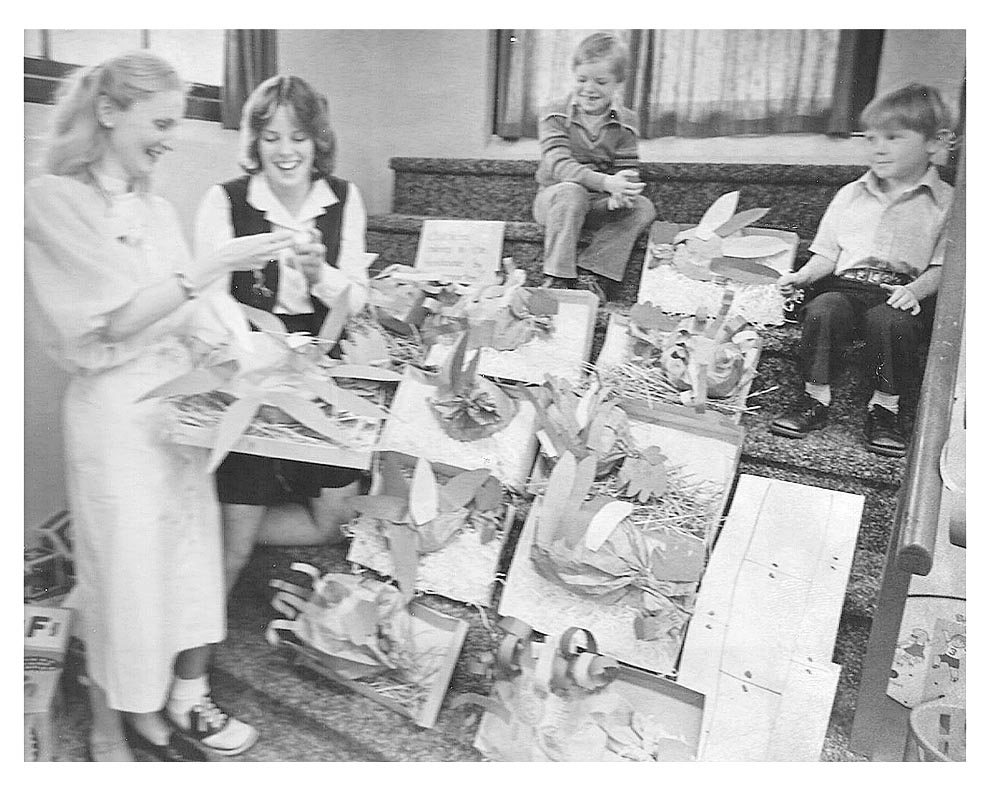
“The voice of the last cricket across the first frost is one kind of good-by.
It is so thin a splinter of singing.” Carl Sandburg
It was September 1977. Annunciation School in Aurora. My kindergarten class of 32 with no aide. How I loved the children. We shared that year together in harmony. Once when on a field trip to the Morton Arboretum in Lisle, Charles exclaimed “Boy, this is living.”

When I taught reading readiness, one of the workbook pages had several frogs on it. The children were to distinguish which frog was first, which one second and which one was last. It was a prelude to beginning and ending sounds. The reading group came up to the circle and Jerry and Brenda began to compare how their frogs looked. “What’s that on your frog, Brenda?” asked Jerry. Brenda, who had colored her frog brown, instead of green, replied that she didn’t know. “Well, he said, I want that mud off your frog.”
The children thought this exchange very funny and they all proceeded to laugh. It became a key phrase for quite a while in the room. Whenever a toy was misplaced or a puzzle was not put back properly, someone would exclaim “I want that mud off your frog.” The children knew that the phrase meant “Do it right” or “Put things where they belong.”
As Silvia Ashton Warner suggested in her book “Teacher”, organic reading in not new. The Egyptian hieroglyphics were one-word sentences. Helen Keller’s first word “water” was a one-word book. Author Leo Tolstoy found his way to it in his peasant school. While out in the field of UNESCO, this is used as the only reasonable way of introducing reading to primitive people. In a famine area, the most natural words to teach begin with “crop” and “hunger” and the like.
And thus, September arrives with its golden days and as a harbinger of colorful autumn. It is radiant September with a full harvest moon.
Girl children are putting together their wardrobes and new white socks and hair ribbons. Boy children are getting haircuts and new trousers. All seem ready to begin a new school year and to be with their friends once again. This school year is a combination of classroom and home school and we are uncertain for how long.
Reading, obtaining meaning from printed symbols, is such a precious gift. It is one of the keys to success. Other keys include character, integrity, compassion, honesty and intelligence. When you direct the child’s mind and imagination to reading, you lead her/him to a wonderland of possibilities.
Even the smallest child can enjoy picture books and from there can describe the pictures. When shown a farm scene, for example, the child can describe the cows and barns and chickens in that scene. From this point, it is natural to develop a sight vocabulary. Use experience charts, alphabet games and songs, books, word pyramids, organic sentences, and creative use of a basic reading text. Use very little digital/screen items. Oral language exercises and conversation will be helpful.
From the fourth grade age onward, the children can write an essay on one of the following topics: What is the taste of sorrow? Or… What is the beginning of loneliness? Or… How old is honesty? How tall is the truth? Or… How would it feel to be pink? Write poems or stories on topics such as the face in a window, the grandfather clock, three galloons of water, or a thousand buttons. Pretend stories could include I am a dollar bill or a Cecropia moth or a lynching rope or a burned-out Christmas tree light.
Slowly, from a moment, the living a child accomplishes! And you, as teacher, can capitalize on this energy and evolving sense of self. In the crepuscule of morning, when September days rise with the sun, you can engage and excite and empower your child to learn the joy of reading.

